FRUITS
8 Vegetables and Fruits You Never Grow Near Potatoes
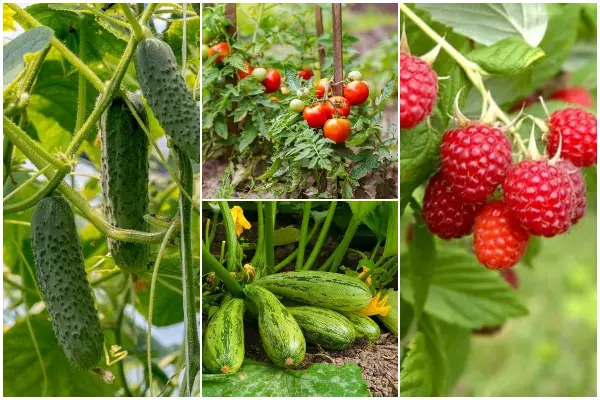
Potato is an easy-to-grow crop, but to harvest a high yield, this tuber also requires some gardener experience. Apart from taking notes of caring, soil, water…, there are other problems you should avoid. That are incompatible plants! They compete, spread easily pests and diseases, and stunt the growth of potatoes. So, if you are a beginner in gardening, you should save these notes for your potato garden.
#1 Squash
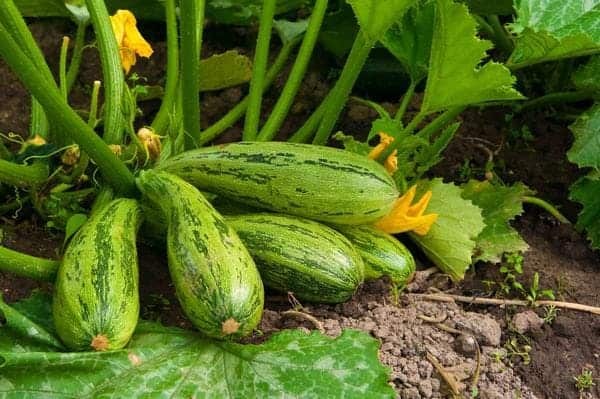 Image source: bonnieplants
Image source: bonnieplants
Squash belongs to the cucurbit family. For the happy growth of potatoes, you shouldn’t grow squash near them as this veggie can make your potatoes more susceptible to blight
#2 Carrots
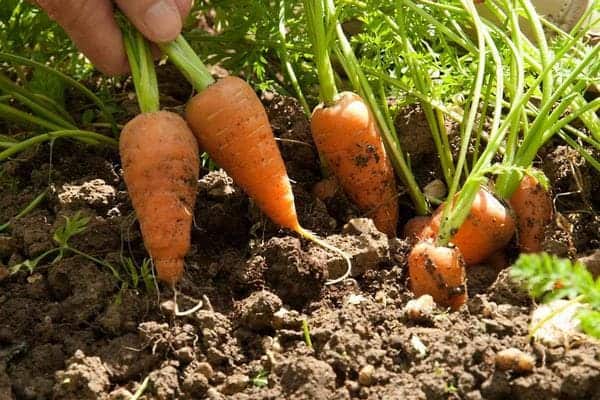 Image source: rhs
Image source: rhs
When harvesting potatoes, this can disrupt, and even damage the carrot crop nearby. Also, they don’t have the same environmental needs. Carrots can cope with far drier conditions than potatoes and may stunt the growth of potato tubers
#3 Tomatoes
 Image source: bonnieplants
Image source: bonnieplants
Potatoes, tomatoes, peppers, and aubergines belong to a part of the same plant family. So, when growing them together, harmful pests and diseases spread easily between them
#4 Cucumbers
 Image source: mygarden
Image source: mygarden
If you grow potatoes near cucumbers, your potatoes get susceptible to blight easier.
#5 Asparagus
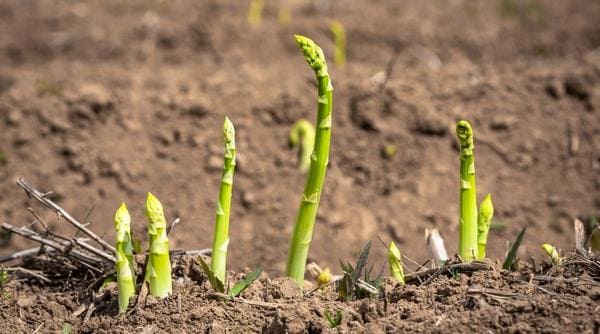 Image source: allaboutgardening
Image source: allaboutgardening
Asparagus is a perennial veggie that has an extensive root formation, so it is easy to be damaged by the earth movement required in potato growing and harvesting. It also will compete with the potatoes and stunt their development.
#6 Fennel
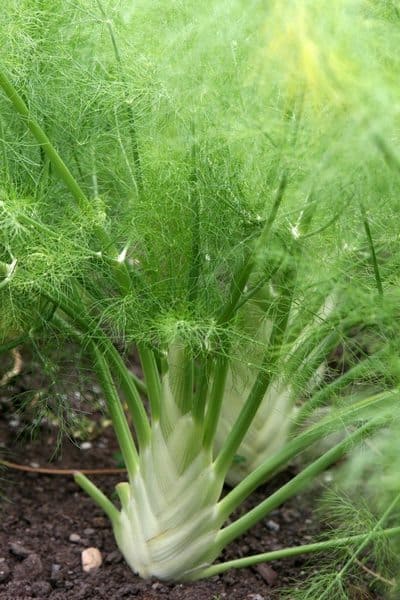 Image source: gardeningknowhow
Image source: gardeningknowhow
Fennel excretes the chemicals that affect other plants, it can stunt the growth of a wide range of commonly cultivated crops, including potatoes.
#7 Sunflowers
 Image source: pinterest
Image source: pinterest
Like fennel, sunflowers also excrete chemicals that inhibit seed germination and stunt the growth of other crops grown nearby. So, when growing it near potatoes may result in smaller and misshapen potato tubers.
#8 Raspberries
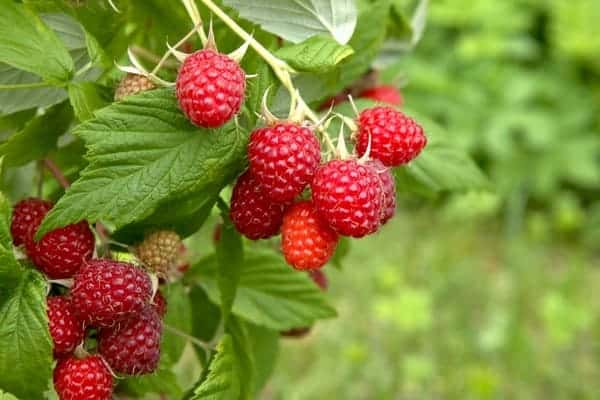 Image source: backyardberryplants
Image source: backyardberryplants
Raspberries can increase the chances of a problem with blight or other potato diseases, so you should grow this berry well away from your potato plants.
FRUITS
14 Fruit Trees for a Quickly Harvest
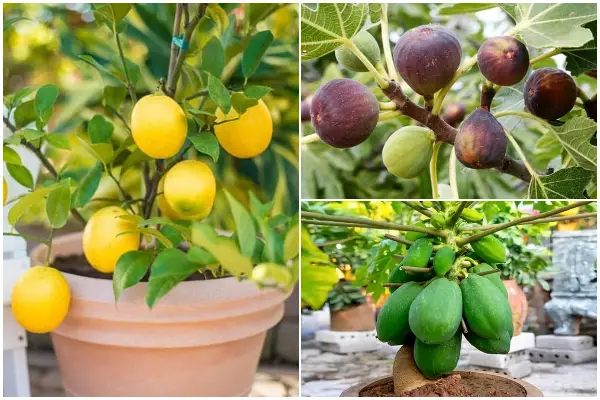
To enhance the landscape, fruit trees also are great additions. They provide lots of benefits, from floral beauty, and spreading fragrance, attracting pollinators, increasing property value, providing shade, and best of all giving you delicious fruits to eat.
Here are 14 Fruit Trees for a Quickly Harvest with an abundance of fruit in just a few years!
1. Lemon
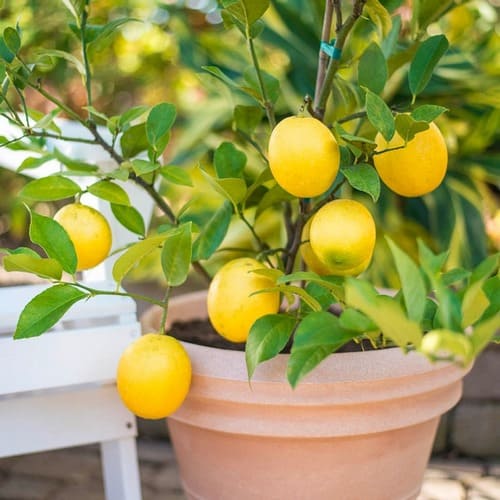 Image source: springhillnursery
Image source: springhillnursery
Depending on the size and age of the lemon tree you buy, the fruit will be produced in the first season. Fruiting grafted lemon plant starts bearing fruit in the same year.
2. Strawberry
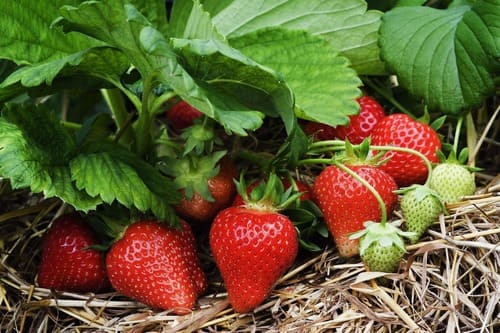 Image source: plantinstructions
Image source: plantinstructions
Strawberries can be grown everywhere in pots, hanging baskets, upside-down planters, and garden beds. They will be ready to provide you with fruits within the same year.
3. Fig Tree
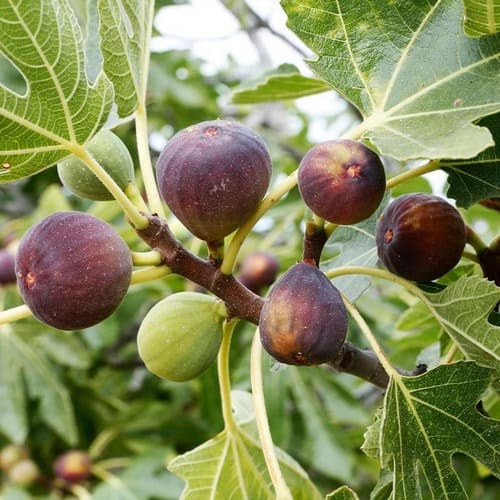 Image source: fast-growing-trees
Image source: fast-growing-trees
Fig trees grow fast and bear fruit in the second year of planting. You can control the height by growing dwarf varieties in pots.
4. Cherry Tree
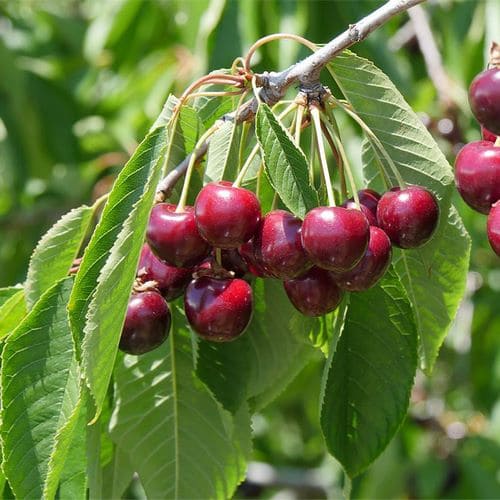 Image source: arborday
Image source: arborday
Buying a grafted and well-established cherry tree from a nursery is the surest way to enjoy the fruits from the next year.
#5. Mulberry
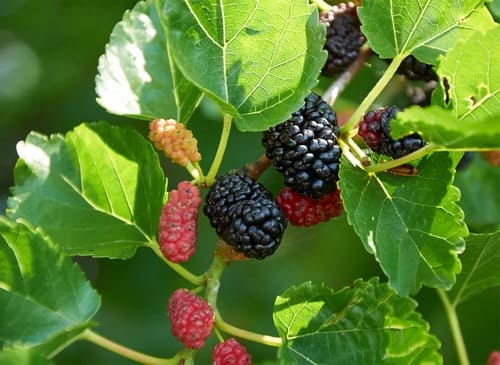 Image source: visitmontanejos
Image source: visitmontanejos
Mulberries ripen in summer, producing sweet, large, black fruits. The tree starts to bear fruits in the second year and grows fast. It does well in almost any type of soil.
6. Blueberry
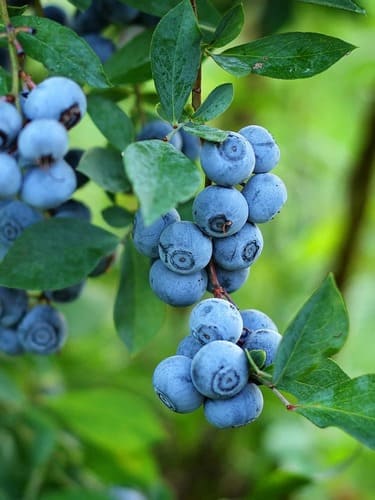 Image source: plantmegreen
Image source: plantmegreen
Blueberries are fast growers the berries can be harvested two to four months after flowering, and then they will fruit a year after being planted.
7. Raspberry
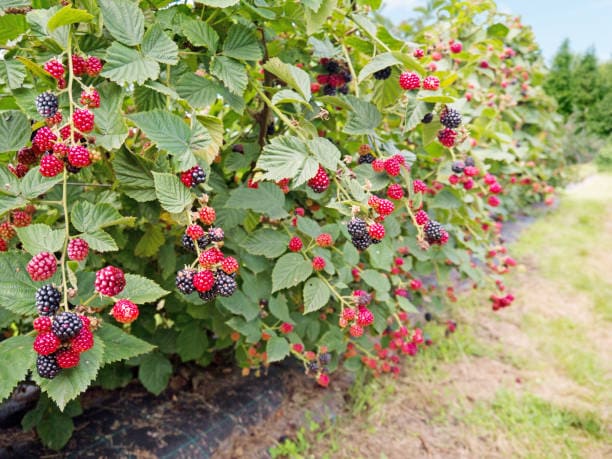 Image source: istockphoto
Image source: istockphoto
Raspberries bear fruit in the second year. These plants are self-pollinating and you can select between black, red, or purple berries.
8. Apple Tree
 Image source: homesandgardens
Image source: homesandgardens
Apple trees start bearing fruits in just 2-3 years. They can grow up to 13-15 feet tall. Plant the tree in full sun and moist, well-draining soil.
9. Passion Fruit
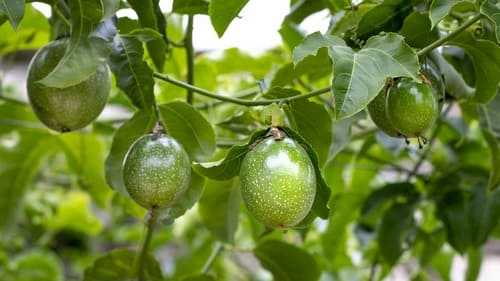 Image source: cairnspost
Image source: cairnspost
Passion fruit bear fruits in 10-14 months and you will get one large crop in the summer and fall.
10. Watermelon
 Image source: bonnieplants
Image source: bonnieplants
According to the variety, the watermelons can be harvested within 60-100 days from planting.
11. Apricot Tree
 Image source: brighterblooms
Image source: brighterblooms
The apricot tree bears fruits for two months in mid-summer. The tree grows best in hardiness zones 5-8. It’ll fruit from the next year of planting.
12. Pear Tree
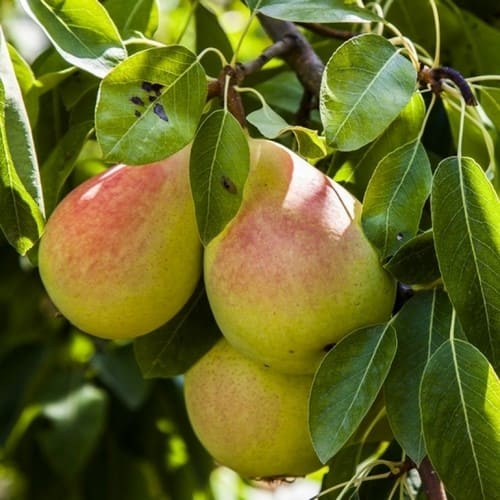 Image source: plantsguru
Image source: plantsguru
Pear trees are fast-growing, it attains a good height in a short span of time. It can bear fruit from 1 to 2 years after planting in late summer. Dwarf varieties reach up to 8-12 feet tall with 6-10 feet of spread and you can grow in pots.
13. Papaya
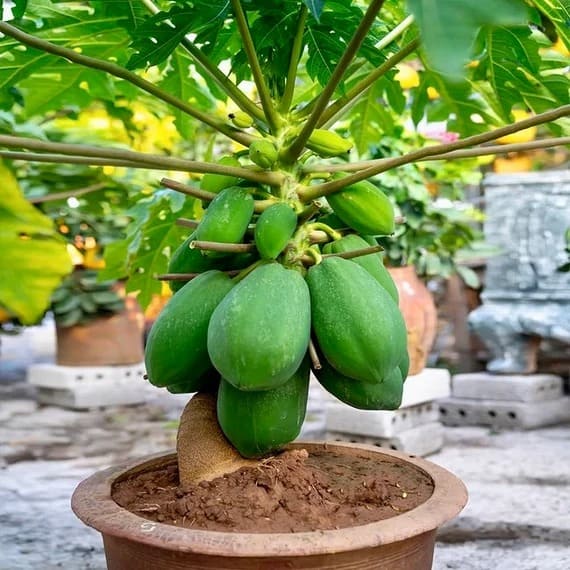 Image source: etsy
Image source: etsy
Papaya tree grows fast, and a healthy established plant bears fruits in 6-12 months after planting.
14. Peach
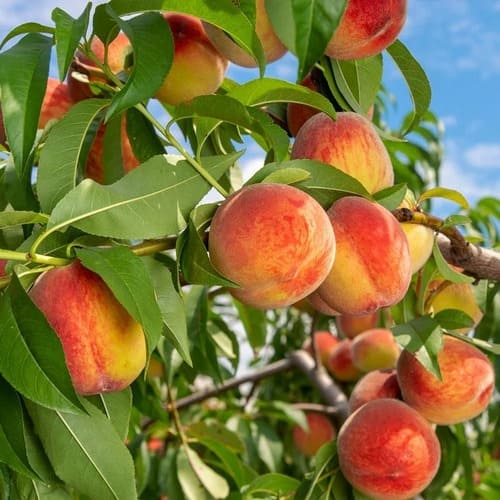 Image source: fast-growing-trees
Image source: fast-growing-trees
Peach trees grow fast and attain up to 4-6 feet in height within a year. They bear delicious fruits in the second year of growth and also comes in dwarf varieties to grow in pots.
FRUITS
13 Best Fruits That Grow Well in Containers and Pots
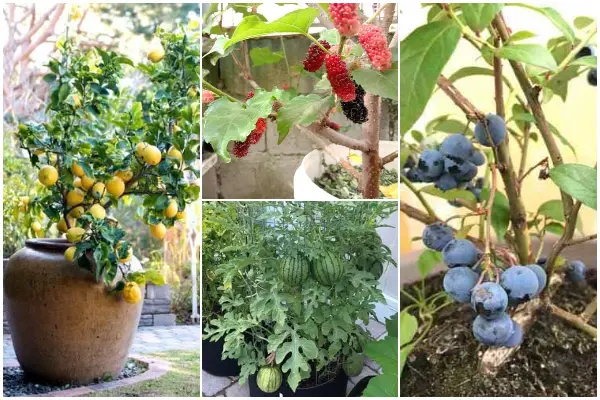
Love enoying freshly harvested fruits but you don’t have the area to dig or you don’t want to hurt your back for digging soil and pulling weeds. Go for the 13 Best Fruits That Grow Well in Containers and Pots, they will help you deal with your problem. They are both easy to take care of and productive in each container making them great fruit trees.
1. Tomatoes
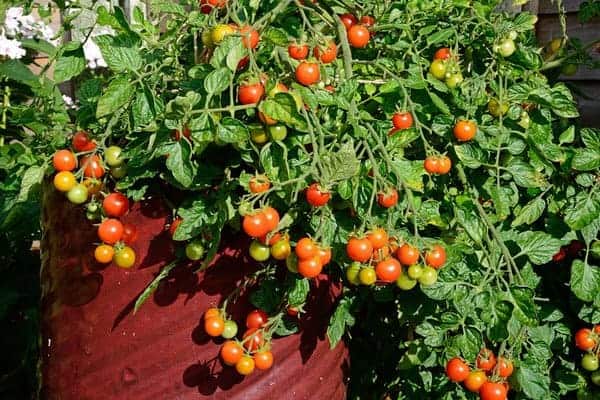
Tomatoes are considered both a vegetable and a fruit and can be grown in containers. When they start to take off as their fruit gets a little heavy, let’s give them some support. Here are some DIY trellis or cages you can make easily at home.
2. Fruit Trees
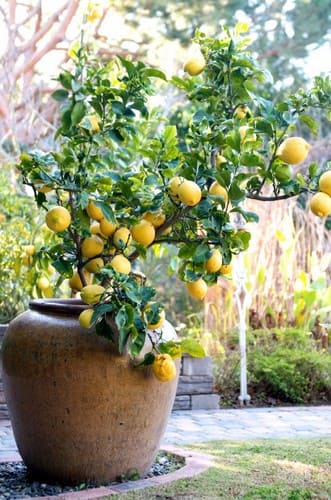
All dwarf versions of a fruit tree can be grown well in containers such as cherries, peaches, apples, pears, Meyer lemons, limes, and oranges. And you can move them outside during warm seasons and bring them in when the hardy weather threat.
3. Pineapple
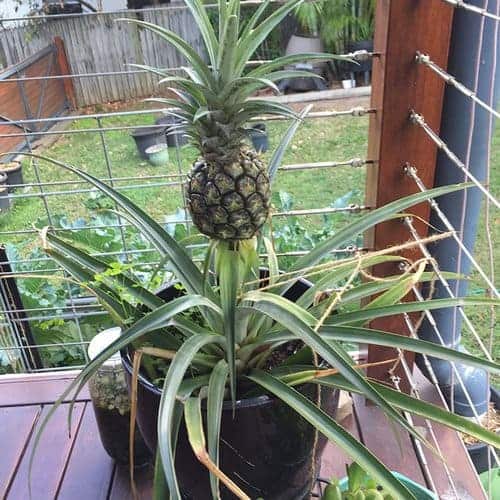
Pineapples grow easily in containers. To grow this fruit, you just cut the crown off of a pineapple, and soak it in water for a day or two. And then, plant it in a gallon-sized container and place it in the sun. After a period of waiting, you will be rewarded with homegrown pineapples.
4. Figs

To grow figs in containers, you just prepare a pot that is about 16 inches across with well-drained soil. They require full sun and tolerate drought. Also, give it water regularly during the hottest periods of summer since water evaporates faster in small gardening spaces like containers or pots.
5. Cantaloupe

The fresh taste of cantaloupe is worthy of growing in your garden. You can grow it in a large container and take care of the plant as you grow it in the garden. For the best, provide a trellis or stick to support the fruit and give the vines a place to grow.
6. Watermelon
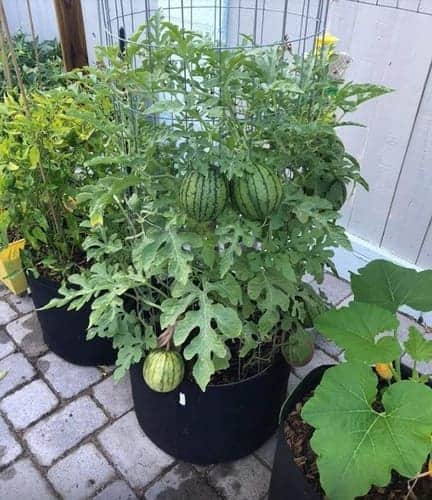
If you want to grow Watermelon in containers, give the pots self-watering ones because this fruit needs so much water. It grows well both indoors and outdoors as long as the plant gets sunlight daily from direct sunlight to artificial sunlight, or even through a window.
7. Passion Fruit
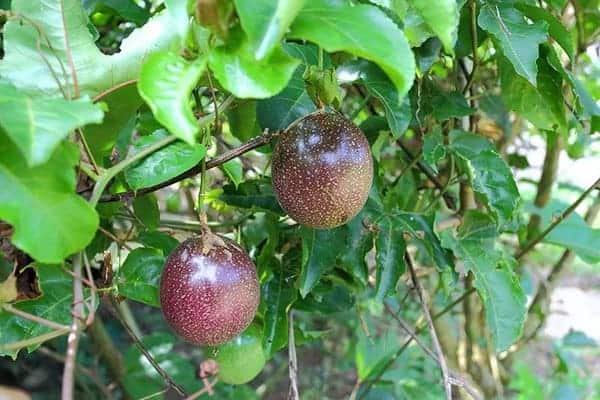
Passion fruit is a beautiful perennial that grows well in containers and just can plant once. It is a vining plant so it needs a sturdy trellis for its heavy harvest.
8. Bananas

Bananas are perennials and suitable for large containers with well-drained soil. When growing in containers, you can move anywhere that is convenient for you, especially during the winter to protect your plants from frost.
9. Currants
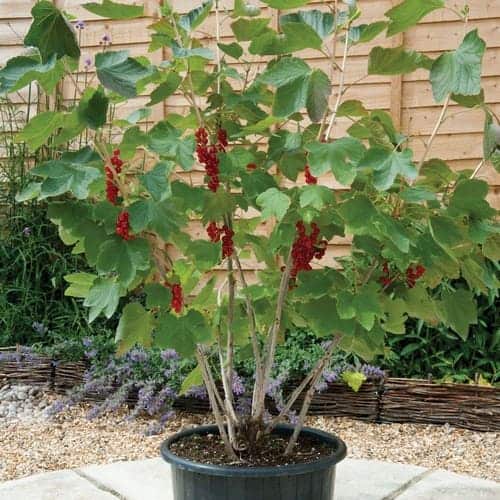
Currants don’t require much care when grown in containers. All they need is a large pot, much water, and an adequate amount of compost. You can grow them as bushes or train them to go up a trellis as well.
10. Strawberries
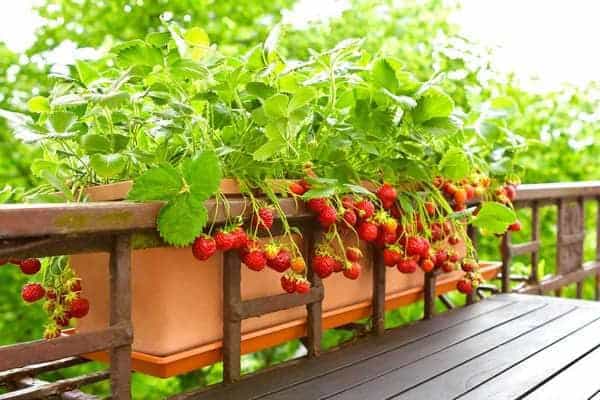
Strawberries are one of the best options to grow in containers. You can move them inside during the cold winter days to protect the roots from frost. The plants require well-drained soil and get about 8 hours of direct sunlight at least each day.
11. Blueberries
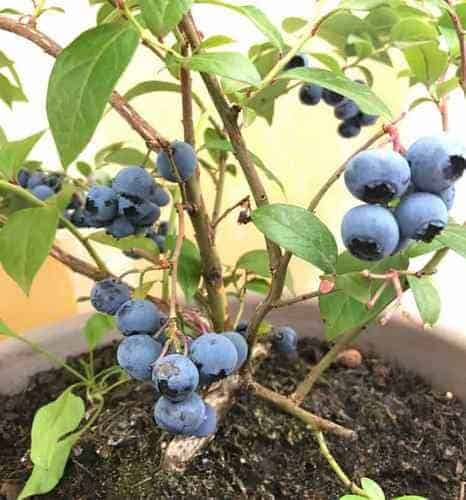
To grow Blueberries in containers, grow at least 2 plants for a decent harvest in a pot that is 22 inches in diameter and 18 inches deep. From June through August, they will produce.
12. Gooseberries
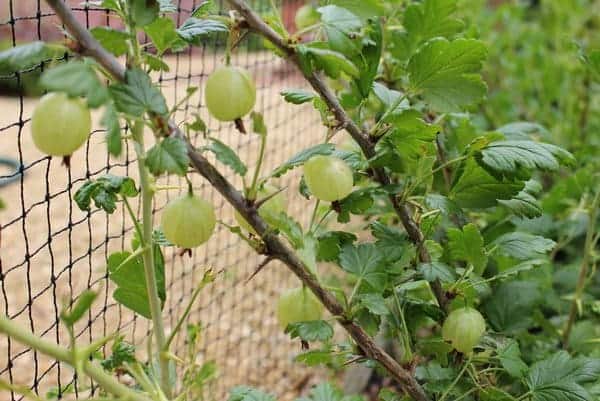
You can grow this berry in containers without worrying about running out of space. Like currants, it basically needs the same care. To grow it, give it a large pot with the same soil and fertilizing requirements as growing the currants.
13. Mulberries

Mulberry dwarf trees grow well in large containers, so you can try growing the berry next year on your patio or porch.
FRUITS
12 Veggies and Fruits That Have Peels Containing Nutrients
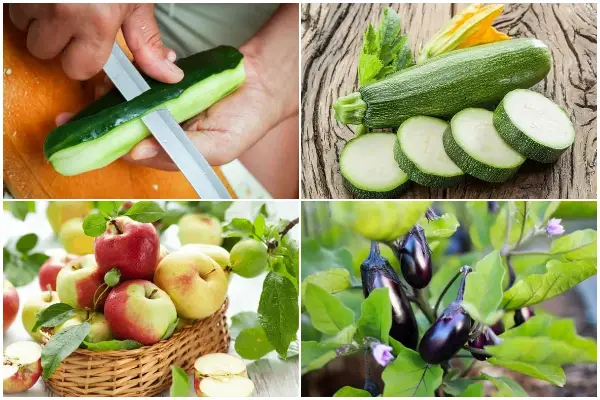
Most people usually peel fruit and vegetable before eating. However, there are some types that contain many nutrients in their skins. These peels are considered waste, but in fact, they hide great secrets with a wide range of antioxidants, fiber, minerals, and vitamins that are good for health.
Check out the 12 Veggies and Fruits That Have Skins Containing Nutrients to know which they are. From now on, instead of tossing them in the trash, cook them to get more nutrients as well as you also are preventing food waste. Make sure that eating them when they are actually fresh and organic.
#1 Eggplants
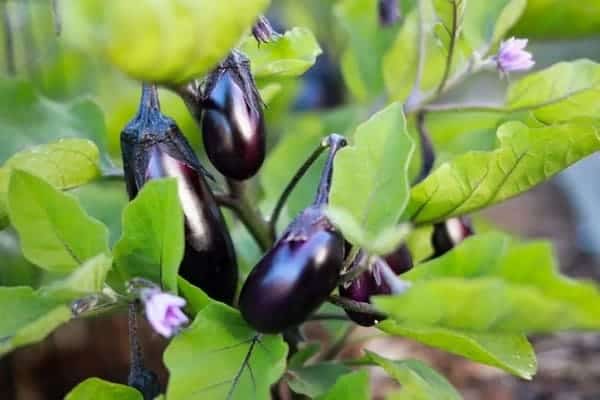 Image source: tinygardenhabit
Image source: tinygardenhabit
For younger eggplants, you can absolutely eat their peels. Not only does it taste fantastic, but they also hold the integrity of the eggplant together. Also, they leave nutritious skin on that is good for your health when consumed. The peels are covered with a powerful antioxidant called nasunin that protects brain cell membranes, assists in the transport of nutrients, and removal of waste. According to the study, nasunin has also been proven to prevent neuroinflammation and increase blood flow, which could help improve memory.
#2 Apples
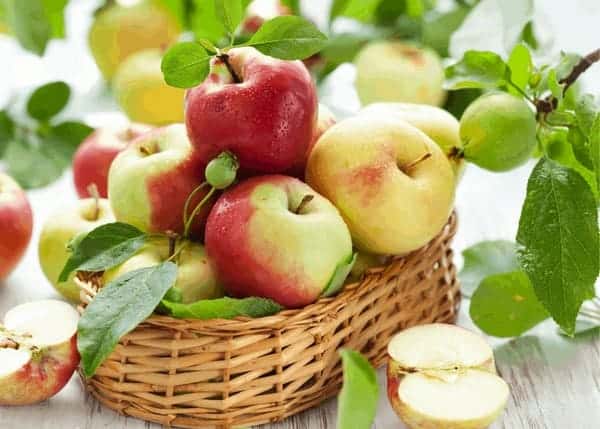 Image source: homefortheharvest
Image source: homefortheharvest
Do you know that all parts of apples should be eaten? From its peels to core and all! For this reason, unpeeled apples have double the fiber, 19% more potassium, and 142% more vitamin A than their peeled counterparts. It also contains 332% of the recommended daily value of vitamin K. So, don’t toss a whole lot of nutrients in a landfill.
#3 Oranges
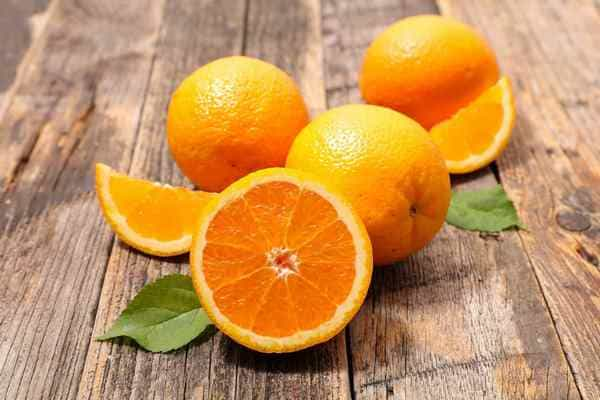 Image source: howmuchisin
Image source: howmuchisin
Orange peels are good for your health as 1 tablespoon of orange peel provides 14% of all the vitamin C you need in one day, three times more than the pulpy juice inside. Also, they contains high in vitamin C, vitamin A, folate, riboflavin, thiamine, B6, and calcium. For consumption, you can use dried orange peels in tea or mulled wine which are common ways that you can take advantage of orange peels.
#4 Carrots
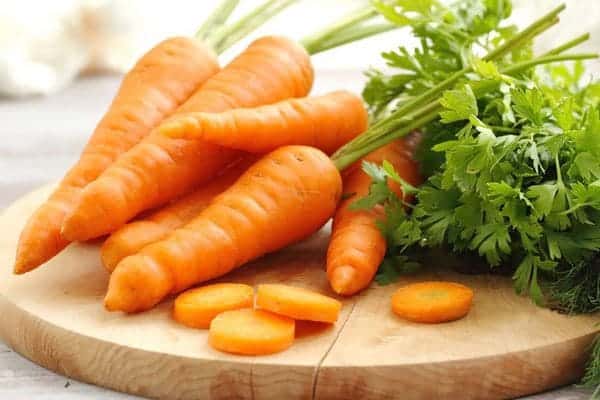 Image source: gardenopedia
Image source: gardenopedia
The entire carrot is edible from leaf tip to root, including the peels. Carrot peels do contain some wonderful nutrients such as vitamin C, beta-carotene, and niacin. Just wash and scrub your carrots, you absolutely do not have to peel them, then toss them into delicious daily meals.
#5 Lemons
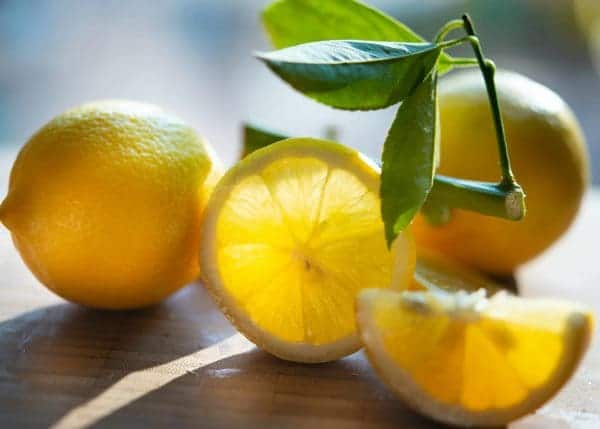 Image source: lifespa
Image source: lifespa
Lemon peels contain a spectrum of vitamins, minerals, and fiber that are good for health. If you plant lemon trees in the garden, you can make the most out of the bioactive compounds or should choose those grown in organic production.
#6 Beets
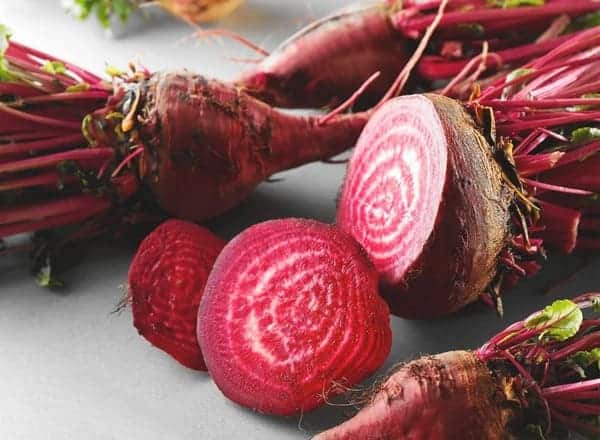 Image source: eatthis
Image source: eatthis
Although beet peels taste soily or they are hard to clean, they are indeed edible, and even are high in vitamin C which has beneficial effects on skin cells. So, when cooking this veggie, all you need to do is cut them into small enough pieces.
#7 Potatoes
 Image source: tastingtable
Image source: tastingtable
Eating potato peels will help you maximize fiber, vitamins, and minerals. Vitamin B3 and potassium, iron, fiber, and flavonoids are a range of good nutrition they can provide in your diet. So, whether you cook or bake your potatoes, save their peels.
#8 Zucchini
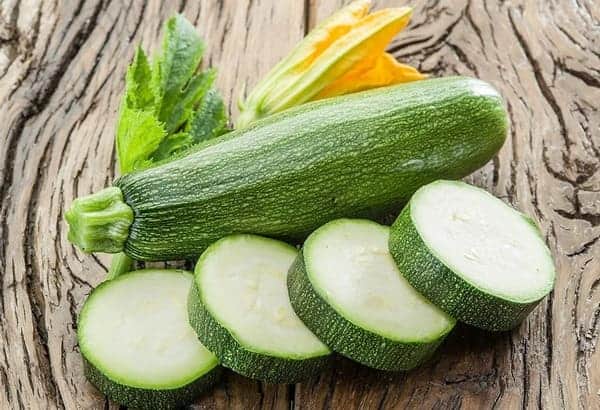 Image source: parenting.firstcry
Image source: parenting.firstcry
Zucchini peels contain the highest level of antioxidants that your body needs plenty of that. So long as the skin is soft, you can eat the whole fruit from stem to blossom end without peeling.
#9 Squash
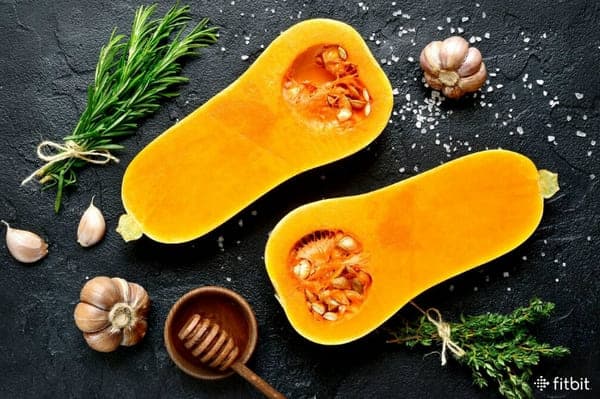 Image source: fitbit
Image source: fitbit
Squash peels not only are edible but also contain beneficial nutrients including vitamins A, C, and E. As such, don’t waste your time peeling that either.
#10 Cucumbers
 Image source: harvesttotable
Image source: harvesttotable
Cucumber peels are loaded with many vitamins, minerals, and fiber. Besides, they contain potassium, magnesium, and molybdenum which are good for your skin. So, you can eat the entire fruit if it is fresh and organic.
#11 Kohlrabi
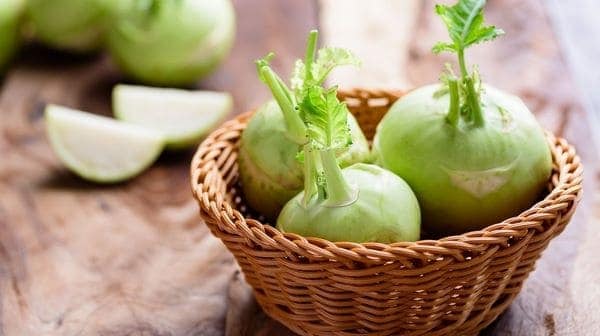 Image source: lovingearth
Image source: lovingearth
All parts of Kohlrabi are edible, from leaves to the bulbous stem, including peels as long as the peels are still tender to get all the nutrients. Vitamins, minerals, and antioxidants in kohlrabi peels can provide important benefits to your health.
#12 Kiwis
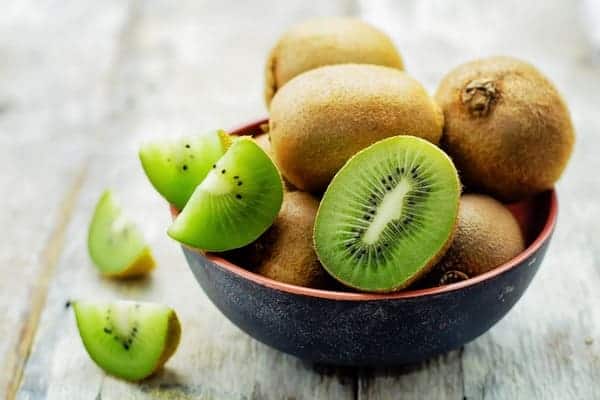 Image source: pinterest
Image source: pinterest
Kiwi peels are high in several nutrients that are good for health, including vitamins C and E, fiber, and folate, and all have strong antioxidant properties. So, if you can, eat it like an apple or slice it for more refined food.
-

 GARDEN10 tháng ago
GARDEN10 tháng ago4 Easiest Ways to Get Free Plants
-

 ANIMALS10 tháng ago
ANIMALS10 tháng agoBritish Angler Caught Huge 67-Pound Goldfish in the World
-

 FUNNY10 tháng ago
FUNNY10 tháng ago30 Funny and Perplexing Photos That Make You Laugh All Day
-

 FUNNY10 tháng ago
FUNNY10 tháng ago30 Weirdest Things That People Came Across On The Subway
-

 GARDEN9 tháng ago
GARDEN9 tháng ago30 Shimmering Side Yard Landscape Ideas
-

 ANIMALS10 tháng ago
ANIMALS10 tháng agoKindhearted Driver Rescues Skinny Dog Hiding Near Highway Thanks to His Eagle Eye
-

 DIY & CRAFT10 tháng ago
DIY & CRAFT10 tháng ago19 Easy and Creative DIY Ideas to Enhance Front Yard
-

 FUNNY10 tháng ago
FUNNY10 tháng ago22 Design Fails That Will Make You Laugh Out Loud




